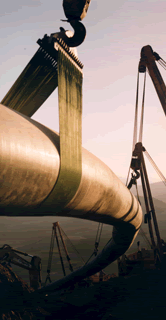As is well known, this excess supply of natural gas in the global market arose for two reasons: a drop in and slowdown of demand and the non-conventional gas supply, primarily in the US market.
A recent study by Booz&Company concludes that stabilising the excess supply, along with the development of the spot markets, would strengthen natural gas’s position over coal as the alternative fuel for new power stations in the short and medium-term future.
In the US, the increasing relevance of non-conventional gas has intensified talks concerning the role natural gas could play in this country, within the general goal of mitigating climate change. Last summer, the Massachusetts Institute of Technology (MIT) published The Future of Natural Gas, a report which supports the establishment of a carbonpricing system, the cost of low-carbon technologies and the benefits of a global gas market. According to this report, cuttingCO2 emissions in half by 2020 is possible using a carbon pricing mechanism. Results could prove two-fold: firstly, reduce demand, and secondly, replace coal with natural gas within the electricity generation industry.
As mentioned, the evolution of prices in the main short and medium-term exchange markets kept values low for much of 2010, in line with the previous year’s trends, with US market values even lower. For example, at the end of April, the futures prices reflected in the American-based NYMEX varied between 4.2 and 5.3 $/MMBtu for the next 12 months. At the end of September, the range for the next 12 months fluctuated between 3.8 and 4.5 $/MMBtu. In December, the cold wave which swept across the northern hemisphere was accompanied by a hike in prices. The NYMEX 12-month strip rose to nearly 5 $/MMBtu.
The US Government Agency EIA, in the forecast published in April 2010, estimated the average value of the Henry Hub spot market price to be 4.44 $/MMBtu in 2010. In 2011, the forecast showed 5.33 $/MMBtu. In December, Oil and Gas Journal published predictions that US prices would remain low throughout 2011, due to the shale gas supply.
Se espera que en los próximos años, el gas natural tenga un gran avance en los países en desarrollo (incluidos China e India).

-
 ENAGAS
ENAGAS

